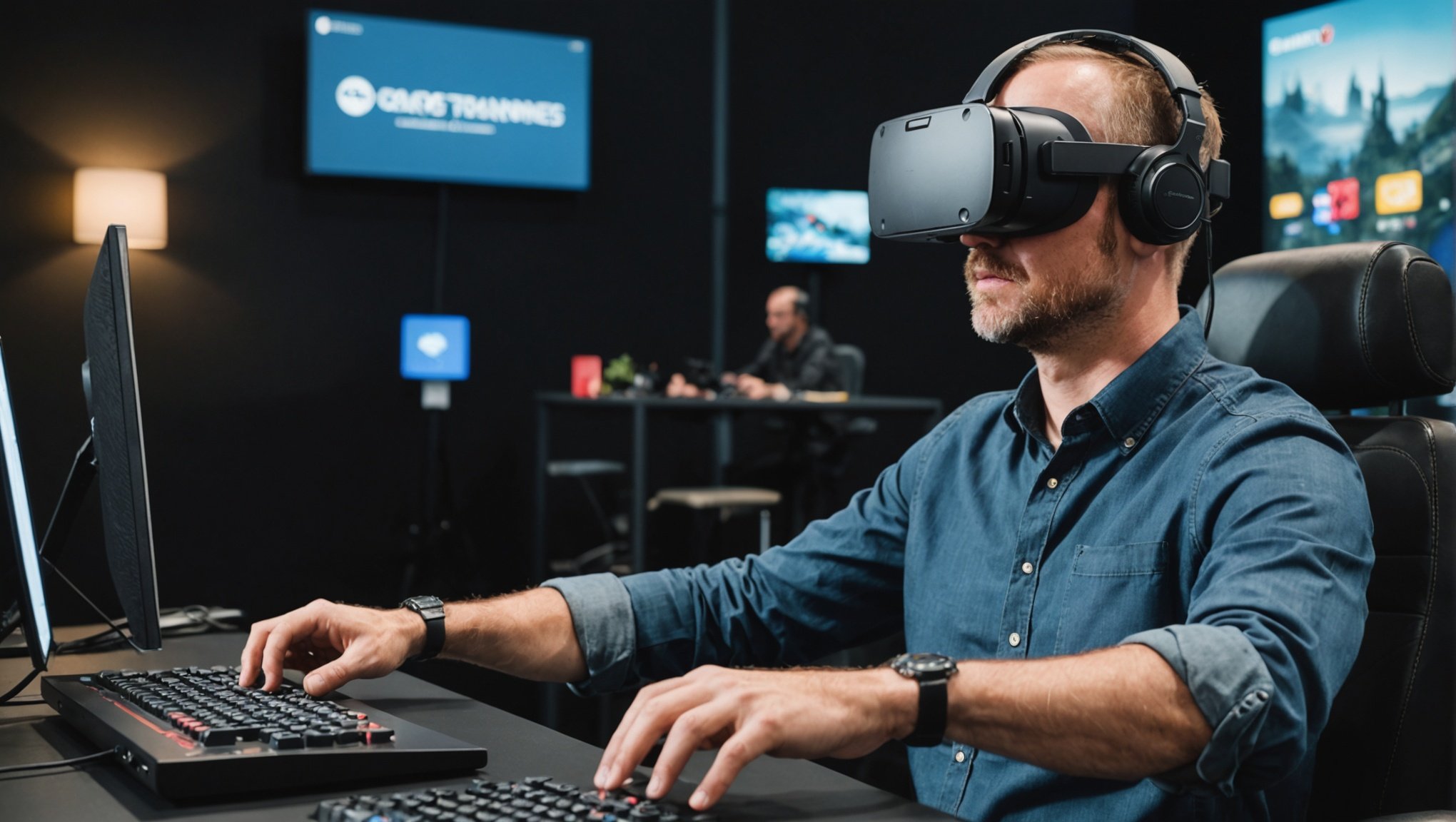Mastering Seamless Switches: Top Strategies for Fluid Transitions Between VR and Traditional Gaming
The Evolving Gaming Landscape
The world of gaming has undergone a significant transformation in recent years, with the rise of virtual reality (VR) and augmented reality (AR) technologies. These innovations have opened up new avenues for immersive gaming experiences, but they also present a unique challenge: how to seamlessly transition between VR and traditional gaming environments. In this article, we will delve into the top strategies for achieving fluid transitions, enhancing the overall gaming experience for users.
Understanding the User Experience
When it comes to gaming, the user experience is paramount. Users expect a smooth, uninterrupted journey whether they are navigating a virtual world or engaging in traditional gameplay. To achieve this, game developers must consider several key factors:
In parallel : Transform Your Gaming Experience: Mastering 3D Audio Techniques for Richer Soundscapes
Designing for Continuity
Designing a game that seamlessly transitions between VR and traditional modes requires careful planning. Here are some techniques to ensure continuity:
- Unified Game Design: Ensure that the game’s core mechanics and narrative remain consistent across both VR and traditional modes. This helps in maintaining a cohesive user experience.
- Adaptive Controls: Implement controls that adapt to the mode of play. For example, using motion controllers in VR and switching to keyboard or controller inputs in traditional mode.
- Visual Consistency: Maintain a consistent visual style and quality across both modes to avoid jarring transitions.
Real-Time Adjustments
Real-time adjustments are crucial for a seamless transition. Here’s how it can be achieved:
This might interest you : Crafting Realistic Plant Life: Techniques for Developers to Enhance Vegetation in Open-World Adventure Games
- Dynamic Rendering: Use advanced rendering techniques to adjust the game’s graphics in real-time, ensuring that the transition from high-resolution VR to traditional mode (and vice versa) is smooth.
- Loading Screens: Optimize loading screens to minimize downtime during transitions. This can be done by loading assets in the background or using clever design elements to distract the user.
Leveraging Advanced Technology
Advanced technologies such as Unreal Engine and cutting-edge display technologies play a significant role in facilitating smooth transitions.
Unreal Engine and Game Development
Unreal Engine, a powerful game development tool, offers several features that can help in creating seamless transitions:
- Multi-Platform Support: Unreal Engine supports development across multiple platforms, including VR and traditional gaming environments.
- Dynamic Global Illumination: This feature allows for real-time lighting adjustments, ensuring that the visual quality remains high regardless of the mode.
- Blueprints and Visual Scripting: These tools enable developers to create complex logic flows that can handle the nuances of transitioning between different game modes.
| Feature | Unreal Engine Support | Traditional Gaming Support |
|
|-----------------------|
|
| Multi-Platform Support | Yes | Yes |
| Dynamic Global Illumination | Yes | Yes |
| Blueprints and Visual Scripting | Yes | Yes |
| Real-Time Rendering | Yes | Yes |
Display Technology and High Resolution
High-quality display technology is essential for maintaining a consistent and immersive experience:
- High Resolution Displays: Using high-resolution displays ensures that the visual quality remains high, whether in VR or traditional mode.
- Refresh Rates: High refresh rates help in reducing lag and ensuring a smooth transition between different game modes.
Techniques for Seamless Transitions
Several techniques can be employed to make transitions between VR and traditional gaming as seamless as possible.
Automated Transitions
Automated transitions can significantly enhance the user experience:
- Auto-Detection: Implement auto-detection features that recognize when the user is switching between VR and traditional modes, adjusting settings accordingly.
- Pre-Loading Assets: Pre-load assets for the next mode to reduce loading times and make transitions smoother.
User Feedback and Quality Control
User feedback is crucial for refining the transition process:
- User Testing: Conduct extensive user testing to identify any issues or discomfort during transitions.
- Quality Control: Implement rigorous quality control measures to ensure that transitions are smooth and free of glitches.
Practical Insights and Actionable Advice
Here are some practical insights and actionable advice for game developers looking to master seamless transitions:
Use Mixed Reality Strategies
Mixed reality strategies, as seen in applications like piano education using VR, can provide valuable insights into how to blend different realities seamlessly.
- Calibration: Ensure proper calibration between the virtual and physical environments to avoid any discrepancies.
- Feedback Mechanisms: Use feedback mechanisms, such as visual cues or haptic feedback, to guide the user through transitions.
Optimize Content for Real-Time Rendering
Optimizing content for real-time rendering is essential for smooth transitions:
- Optimize Assets: Optimize game assets to ensure they can be rendered quickly and efficiently.
- Use Caching: Use caching techniques to store frequently used assets, reducing the time it takes to load them during transitions.
Real-World Examples and Anecdotes
Several real-world examples illustrate the successful implementation of seamless transitions.
VR Piano Lessons
The use of VR in piano lessons is a compelling example of how mixed reality can create a seamless learning experience. By connecting a digital piano to an Oculus Quest, users can practice piano in a virtual environment that aligns perfectly with the physical piano, ensuring a smooth transition between practice and real-life performance.
Game Development Case Studies
Case studies from game development projects can provide valuable insights. For instance, games that use Unreal Engine to develop both VR and traditional versions can share assets and logic, making transitions much smoother.
Mastering seamless switches between VR and traditional gaming is a complex but rewarding challenge. By leveraging advanced technologies, designing for continuity, and optimizing content for real-time rendering, game developers can create a fluid and immersive gaming experience.
As Alec Haase and Tejas Manohar from Hightouch note, “AI Decisioning processes vast amounts of data to decide on the best possible experiences for each individual,” a principle that can be applied to optimizing transitions in gaming by continuously refining and adapting to user interactions.
In the world of gaming, where the line between the virtual and the real is increasingly blurred, creating seamless transitions is not just a technical feat but an art form that enhances the overall gaming experience, making it more engaging, immersive, and enjoyable for users.











